Reno, NV Pollen and Allergy Report for Summer 2023
Pollen Allergy Trends in Reno, NV
When is pollen lowest in Reno, NV?

February
Lowest month total PPM
Avg. PPM
When is pollen highest in Reno, NV?

March
Highest month total PPM
Avg. PPM
How does pollen in Reno, NV compare to Nevada?
Reno has a higher average PPM than the state of Nevada.
Reno yearly avg PPM:
Nevada yearly avg PPM:
How does pollen in Reno, NV compare to the USA?
Reno has a lower average PPM than the USA.
Reno yearly avg PPM:
USA yearly avg PPM:
Is pollen worse this year in Reno, NV?
Spring 2023 was about the same as 2022.
Spring 2023 PPM:
Spring 2022 PPM:
Average PPM in Reno, NV
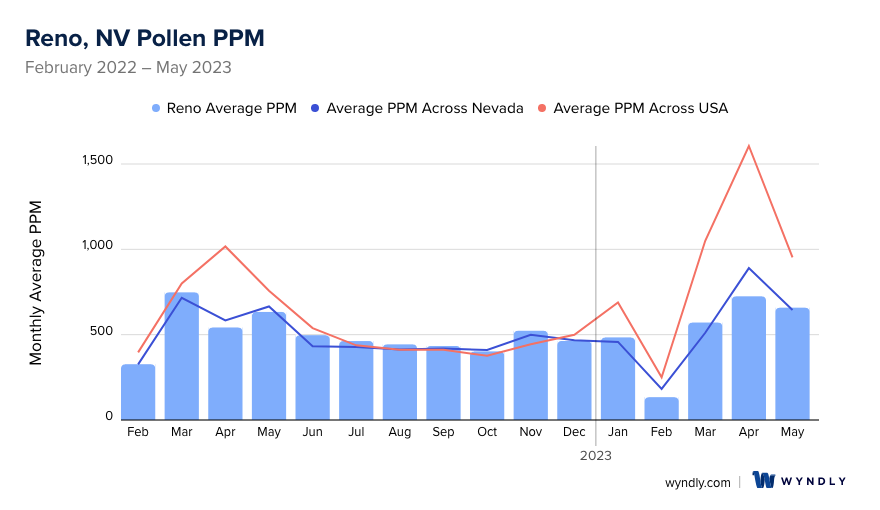
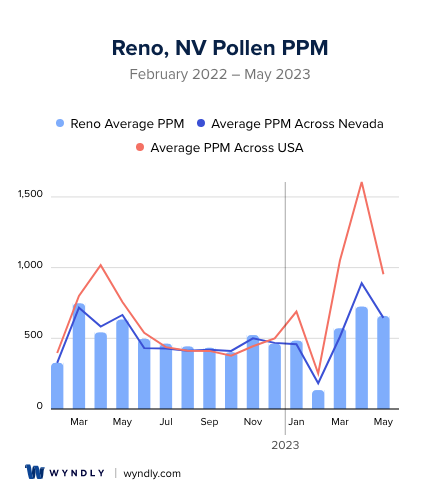
Reno, NV Pollen and Allergy Breakdown by Month
Grass
When is grass pollen highest in Reno, NV?
May has the highest grass pollen in Reno, NV with an average PPM of
When is grass pollen lowest in Reno, NV?
December has the lowest grass pollen in Reno, NV with an average PPM of
Tree
When is tree pollen highest in Reno, NV?
March has the highest tree pollen in Reno, NV with an average PPM of
When is tree pollen lowest in Reno, NV?
August has the lowest tree pollen in Reno, NV with an average PPM of
Weed
When is weed pollen highest in Reno, NV?
November has the highest weed pollen in Reno, NV with an average PPM of
When is weed pollen lowest in Reno, NV?
February has the lowest weed pollen in Reno, NV with an average PPM of
Reno, NV Pollen Monthly Breakdown by Pollen Type
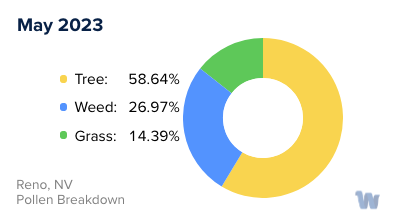
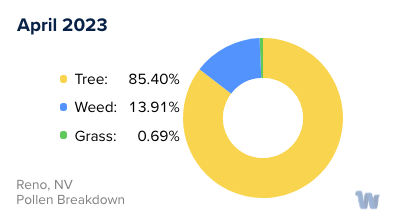
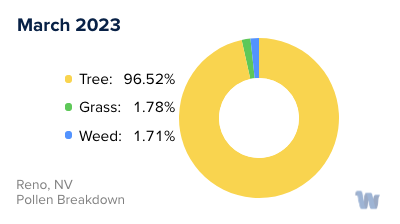
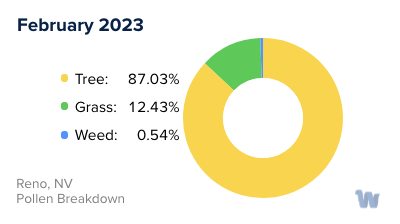
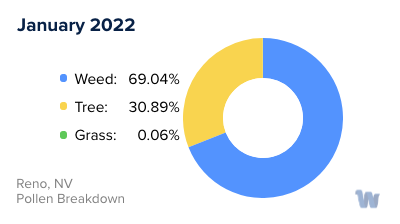
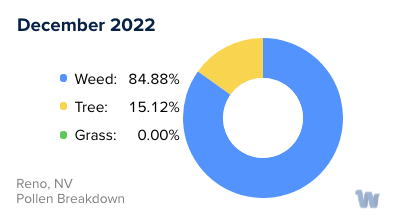
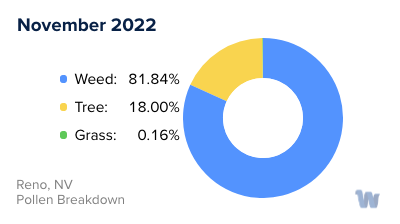
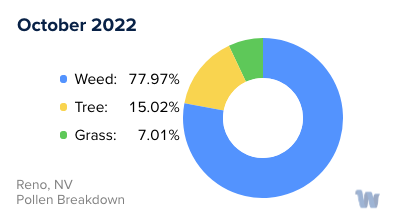
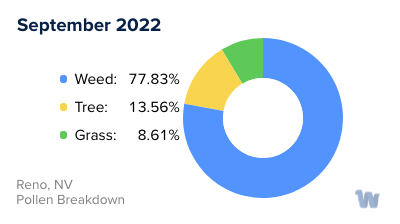
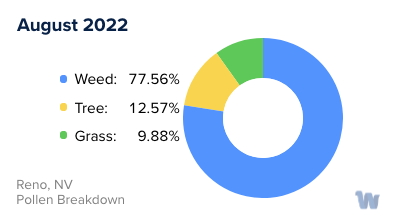
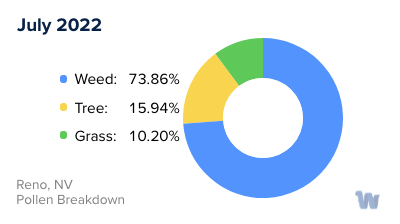
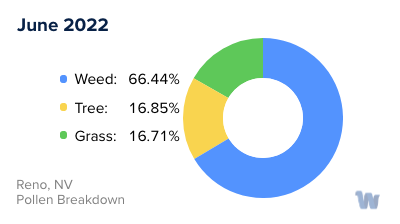
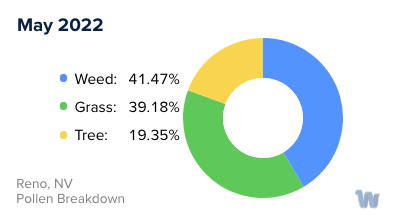
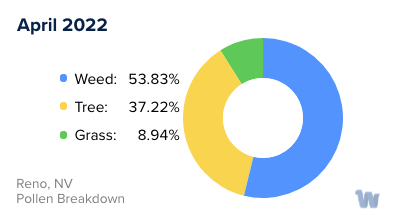
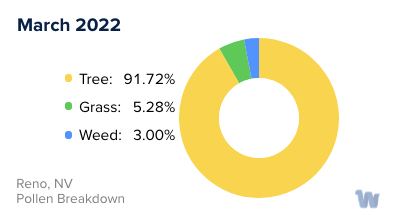
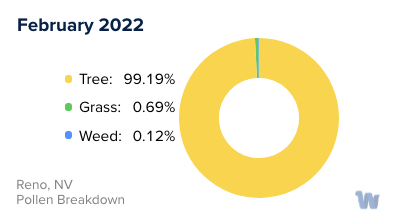
Pollen and Hay Fever in Reno, NV
If you're living in Reno, Nevada, or planning a visit, you may have wondered about the pollen situation, particularly if you're someone who has pollen allergies or hay fever. Reno is nestled in the high desert, surrounded by various species of vegetation, each with its own pollen profile. This diverse flora can make hay fever season a bit tricky for those susceptible to pollen allergies.
Firstly, it's important to understand what pollen is. Pollen is a powdery substance released by plants for fertilization. It's carried by the wind, insects, and other animals. While it's an essential part of the plant life cycle, for many people, it can trigger an immune response causing hay fever, also known as allergic rhinitis.
In Reno, several types of pollen are prominent. Trees are usually the first to release their pollen, often starting in late winter and continuing through spring. Common trees in Reno such as cottonwoods, aspens, and various types of pine produce significant amounts of pollen.
Following the tree pollen season, grasses take the baton. In late spring to early summer, grasses such as Kentucky bluegrass, Timothy grass, and ryegrass, which are common in Reno's parks and gardens, release their pollen.
Finally, as summer transitions into fall, it's the turn of weeds. Weeds such as sagebrush, ragweed, and Russian thistle, which are common in the Nevada desert landscape, become the primary pollen producers.
The intensity and duration of each pollen season can vary from year to year, depending on factors such as winter rainfall, spring temperatures, and wind conditions. Regardless, understanding the types of pollen and their seasons can help you prepare and adapt your lifestyle during peak pollen times, reducing the impact of hay fever on your daily life in Reno.
Remember, this is a general guide and individual experiences with pollen allergies can greatly differ. If you're struggling with hay fever, it's always best to consult with a healthcare professional to understand your specific situation and needs.


